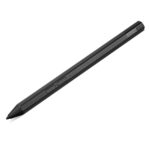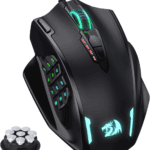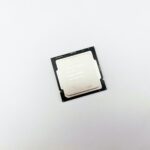Solid-state drives (SSDs) have become the go-to storage option for many computer users. These fast, reliable devices offer significant performance benefits over traditional hard disk drives. But how long can you expect your SSD to last?
An SSD typically lasts 5-10 years under normal use. This lifespan depends on several factors, including the type of NAND flash memory used, the drive’s workload, and its total bytes written (TBW) rating. While SSDs don’t have moving parts like hard drives, their memory cells can wear out over time.
You can extend your SSD’s life by reducing unnecessary writes and maintaining free space on the drive. Regular backups are also crucial to protect your data. By understanding these factors, you can make informed decisions about your storage needs and maximize your SSD’s longevity.
| Factor | Impact on SSD Lifespan |
|---|---|
| NAND Type | MLC and TLC last longer than QLC |
| Workload | Heavy writes reduce lifespan |
| Free Space | More free space = longer life |
| TBW Rating | Higher TBW = longer endurance |
Decoding SSD Lifespan: How Long Will Your Solid State Drive Last?
Solid State Drives (SSDs) have become the go-to storage choice for their speed and reliability. But how long can you expect your SSD to last? Unlike traditional hard drives with mechanical parts, SSDs rely on flash memory, which has a limited number of write cycles. However, don’t worry! Modern SSDs are designed to last for many years under normal usage.
Factors Affecting SSD Lifespan
Several factors influence an SSD’s lifespan:
- Write Cycles: Each time data is written to an SSD, it consumes a write cycle. SSDs have a finite number of write cycles before performance degrades.
- Storage Capacity: SSDs with higher capacities generally have a longer lifespan because the write cycles are distributed across more memory cells.
- Usage Intensity: Heavy workloads, like video editing or intensive gaming, put more stress on the SSD and consume write cycles faster.
- Data Type: Writing large files consumes more write cycles than writing small files.
- Technology and Quality: The type of flash memory (SLC, MLC, TLC, QLC) and the SSD controller’s quality affect its endurance and lifespan.
- Environmental Factors: Extreme temperatures and excessive vibrations can shorten an SSD’s lifespan.
Estimating SSD Lifespan
While it’s impossible to predict an SSD’s exact lifespan, here are some general estimates:
- Average Lifespan: Most modern SSDs can last 5 to 10 years under typical usage conditions.
- TBW (Terabytes Written): Manufacturers often specify a TBW rating, indicating the total amount of data that can be written to the SSD before it’s likely to fail. For example, a 1TB SSD with a 600 TBW rating can have 600 terabytes of data written to it before potential issues arise.
Monitoring SSD Health
You can monitor your SSD’s health using tools like:
- SMART (Self-Monitoring, Analysis, and Reporting Technology): This system built into SSDs provides information about its health and performance. You can access SMART data using utilities like CrystalDiskInfo.
- Manufacturer’s Software: Many SSD manufacturers offer their own software for monitoring drive health and performance.
Tips to Extend SSD Lifespan
| Tip | Description |
|---|---|
| Avoid unnecessary writes | Don’t constantly move large files or perform excessive disk-intensive tasks. |
| Enable TRIM | This allows the SSD to efficiently manage deleted files and free space. |
| Keep your system cool | Ensure good airflow in your computer case to prevent overheating. |
| Update firmware | Manufacturers release firmware updates that can improve performance and reliability. |
While SSDs have a limited lifespan, they are designed to last for many years under normal usage. By understanding the factors that affect their lifespan and following best practices, you can maximize the longevity of your SSD and enjoy its speed and reliability for years to come.
Understanding SSD Technology
Solid-state drives (SSDs) use flash memory to store data without moving parts. This technology offers faster speeds and improved reliability compared to traditional hard disk drives.
Composition and Functionality
SSDs consist of NAND flash memory chips and an electronic controller. The controller manages data storage and retrieval operations. It also handles wear leveling to extend the drive’s lifespan.
NAND flash memory is organized into blocks and pages. Blocks contain multiple pages where data is stored. When you save a file, the SSD controller writes it to empty pages. To update data, the SSD must erase entire blocks before writing new information.
This process, called write amplification, can impact SSD performance over time. Modern SSDs use advanced algorithms to minimize this effect and maintain speed.
NAND Flash Types
SSDs use different types of NAND flash memory, each with unique characteristics:
| NAND Type | Layers | Density | Cost | Endurance |
|---|---|---|---|---|
| SLC | Single | Low | High | Highest |
| MLC | Two | Medium | Med | High |
| TLC | Three | High | Low | Medium |
| QLC | Four | Highest | Low | Low |
Single-Level Cell (SLC) NAND stores one bit per cell. It offers the highest speed and durability but at a higher cost. Multi-Level Cell (MLC) stores two bits per cell, balancing performance and affordability.
Triple-Level Cell (TLC) and Quad-Level Cell (QLC) NAND pack more data into each cell. This increases storage density and lowers costs but reduces endurance. Many consumer SSDs use TLC or QLC NAND to provide ample capacity at competitive prices.
Factors Influencing SSD Lifespan
Several key elements affect how long an SSD will function optimally. These include the number of write operations performed and the drive’s built-in mechanisms to distribute wear evenly.
Write Cycles and Wear-Leveling
SSDs have a limited number of write cycles before their cells start to degrade. Each time data is written to a cell, it slightly wears down the oxide layer that traps electrons. This process is known as the Program/Erase (P/E) cycle.
To combat this issue, SSDs use wear-leveling algorithms. These spread write operations across all memory cells. This prevents any single area from wearing out faster than others. Wear-leveling helps extend the SSD’s overall lifespan.
Modern SSDs can typically handle thousands of P/E cycles per cell. The exact number varies based on the type of NAND flash used. SLC (single-level cell) SSDs offer the highest endurance. MLC and TLC drives provide a balance of cost and durability.
TBW and DWPD Metrics
Two important metrics help you gauge an SSD’s expected lifespan:
- Terabytes Written (TBW)
- Drive Writes Per Day (DWPD)
TBW indicates the total amount of data you can write to the drive over its lifetime. For example, a 250GB SSD with a 150 TBW rating can handle about 150 terabytes of writes before it’s likely to fail.
DWPD shows how many times you can overwrite the entire drive daily during its warranty period. A 1 DWPD rating means you can rewrite the full drive once per day for the warranty duration.
| Metric | Description | Example |
|---|---|---|
| TBW | Total data that can be written | 150 TB |
| DWPD | Daily full drive rewrites | 1 per day |
These metrics help you estimate your SSD’s lifespan based on your usage patterns. For most users, a quality SSD will likely last 5-7 years or more with normal use.
Assessing and Extending SSD Longevity
SSDs offer faster performance and improved reliability compared to traditional hard drives. Understanding failure rates and following best practices can help maximize their lifespan and durability.
Annualized Failure Rate and MTBF
Annualized Failure Rate (AFR) and Mean Time Between Failures (MTBF) are key metrics for assessing SSD reliability. AFR represents the percentage of drives expected to fail within a year. MTBF estimates the average time between failures.
SSDs typically have lower AFRs than hard drives. Studies show SSD failure rates remain fairly constant for at least 5 years, while hard drive failures increase rapidly after 3 years.
MTBF for SSDs can range from 1.5 to 3 million hours. However, actual lifespan depends on usage patterns and environmental factors.
| Metric | SSD | HDD |
|---|---|---|
| AFR | 0.5-0.8% | 2-5% |
| MTBF | 1.5-3M hours | 0.3-1.2M hours |
These metrics help you estimate SSD longevity but don’t guarantee a specific lifespan.
Best Practices for Durability
To extend your SSD’s lifespan:
Enable TRIM: This helps maintain performance and reduces wear.
Avoid defragmentation: It’s unnecessary for SSDs and wastes write cycles.
Leave free space: Keep at least 10% of your SSD empty for optimal performance.
Monitor health: Use tools to check S.M.A.R.T. data and track drive health.
Control temperature: Keep your SSD cool to prevent thermal throttling and extend its life.
Limit writes: Reduce unnecessary data writes to conserve the SSD’s write endurance.
By following these practices, you can help ensure your SSD remains reliable and performs well throughout its lifespan.
Troubleshooting and Data Recovery
SSDs can experience issues that lead to data loss. Recognizing the signs of trouble and knowing how to recover data are crucial skills for SSD users.
Identifying and Managing Bad Blocks
Bad blocks are storage units on an SSD that no longer function properly. They can cause data corruption or loss. To identify bad blocks, watch for these signs:
• Frequent crashes or blue screens
• Files becoming corrupt when saved
• Slow performance when accessing certain files
Many SSDs have built-in tools to detect and manage bad blocks. Use your SSD manufacturer’s diagnostic software regularly. It can often remap bad blocks to spare areas on the drive.
If you notice persistent issues, back up your data immediately. Consider replacing the drive if problems continue.
Recovery Strategies for SSDs
When data loss occurs on an SSD, act quickly. Power off the drive to prevent further damage. Assess the situation:
• Is it a software issue or hardware failure?
• Do you have recent backups?
• How critical is the lost data?
For software-related data loss, try data recovery software. These tools can often retrieve deleted files or data from corrupted partitions.
If the SSD has physical damage or the controller chip has failed, professional help is needed. Data recovery services specialize in SSD recovery. They work in clean rooms and have specialized tools to repair drives and extract data.
| Recovery Method | Best For | Success Rate | Cost |
|---|---|---|---|
| Software Tools | Deleted files, logical errors | Moderate | Low |
| Professional Services | Physical damage, severe corruption | High | High |
Remember, prevention is key. Regular backups are your best defense against data loss on SSDs.
Frequently Asked Questions
SSDs have become a popular storage solution due to their speed and reliability. Understanding their lifespan and performance is crucial for users seeking optimal data storage.
What is the typical lifespan of an SSD in years?
SSDs can last 5-7 years with moderate use. High-quality SSDs may even reach 10 years if used lightly. The lifespan depends on usage patterns and write cycles.
SSDs don’t have moving parts like HDDs. This makes them more durable and less prone to mechanical failure.
Can SSDs lose data without power over time, and how does this affect their overall longevity?
SSDs can potentially lose data if left unpowered for extended periods. This is known as charge leakage.
To prevent data loss, power on your SSD every few months. Regular use helps maintain data integrity and doesn’t significantly impact the drive’s overall lifespan.
How does the longevity of an SSD compare to that of an HDD?
SSDs generally outlast HDDs in the long run. After 3 years, HDD failure rates increase rapidly while SSD failure rates remain stable.
SSDs have no moving parts, reducing wear and tear. HDDs are more susceptible to physical damage from shocks or vibrations.
What indicators show an SSD might be failing?
Signs of SSD failure include:
- Frequent crashes or blue screens
- Bad blocks or read/write errors
- Files becoming corrupted
- Slow performance or frequent freezes
Use S.M.A.R.T. monitoring tools to check your SSD’s health regularly.
How frequently should SSDs be replaced to ensure data integrity?
Replace your SSD when:
- It shows signs of failure
- Its performance degrades significantly
- You’ve reached 90% of its rated write limit
Most users don’t need to replace SSDs proactively. Modern SSDs often outlast the devices they’re installed in.
What methods are available to determine the remaining lifespan of an SSD?
To check your SSD’s remaining lifespan:
- Use manufacturer-provided software
- Check S.M.A.R.T. data with third-party tools
- Monitor the drive’s Total Bytes Written (TBW)
Many SSDs have built-in wear leveling and health monitoring features. These help extend lifespan and provide accurate health status.
| Method | Ease of Use | Accuracy |
|---|---|---|
| Manufacturer Software | High | High |
| S.M.A.R.T. Tools | Medium | High |
| TBW Monitoring | Low | Medium |
Choose the method that best fits your technical expertise and needs.







